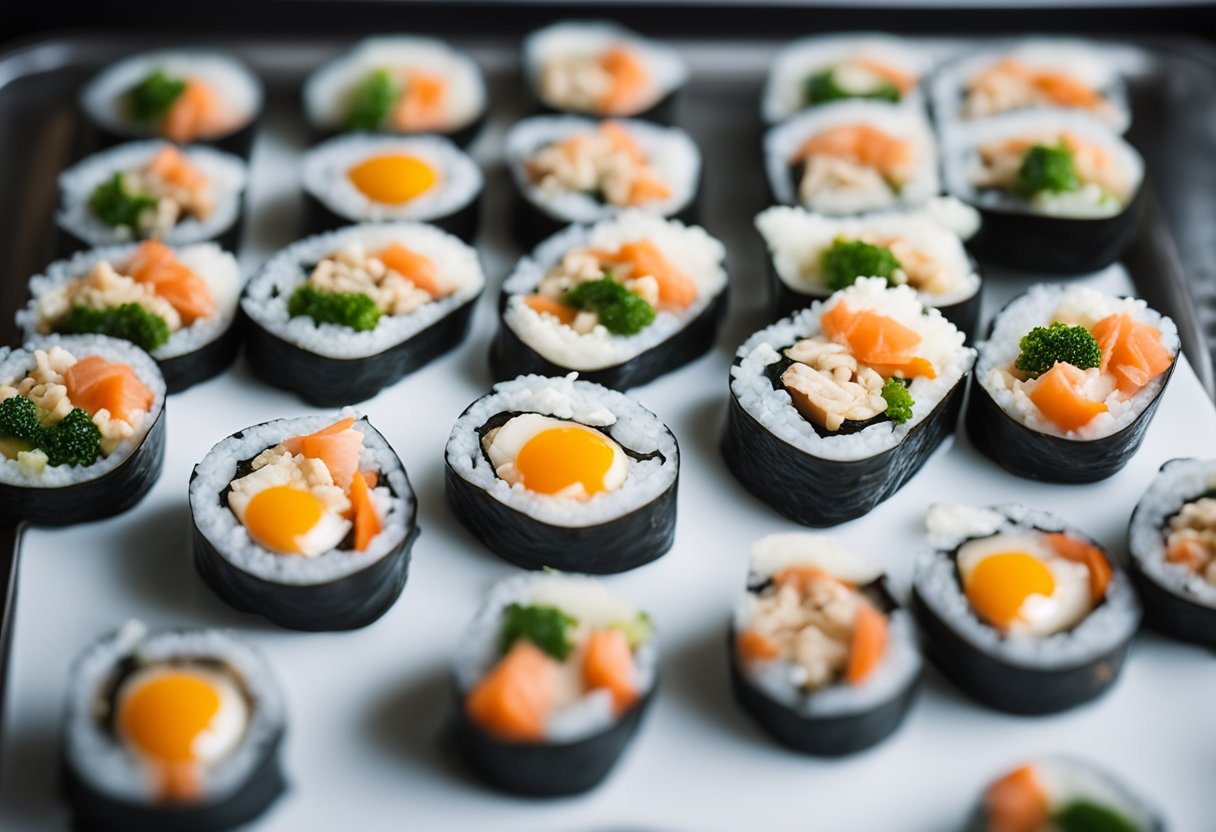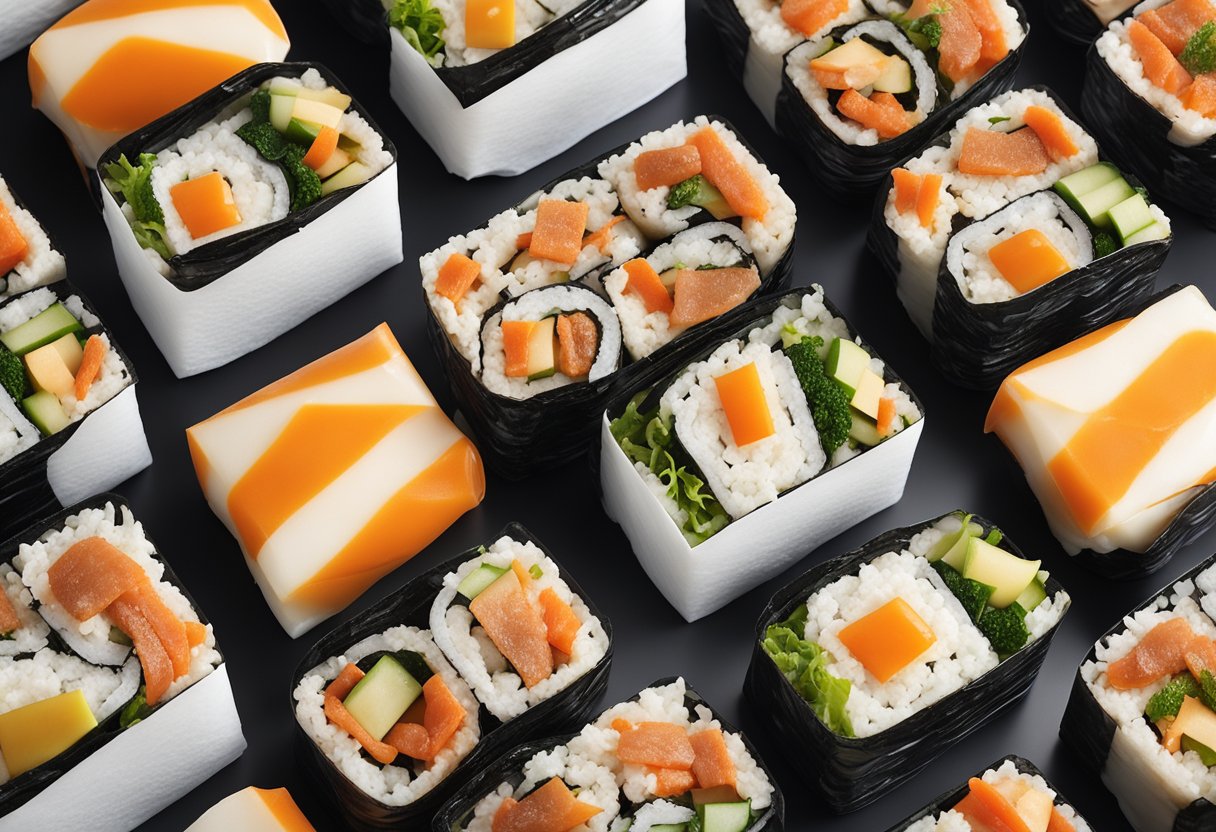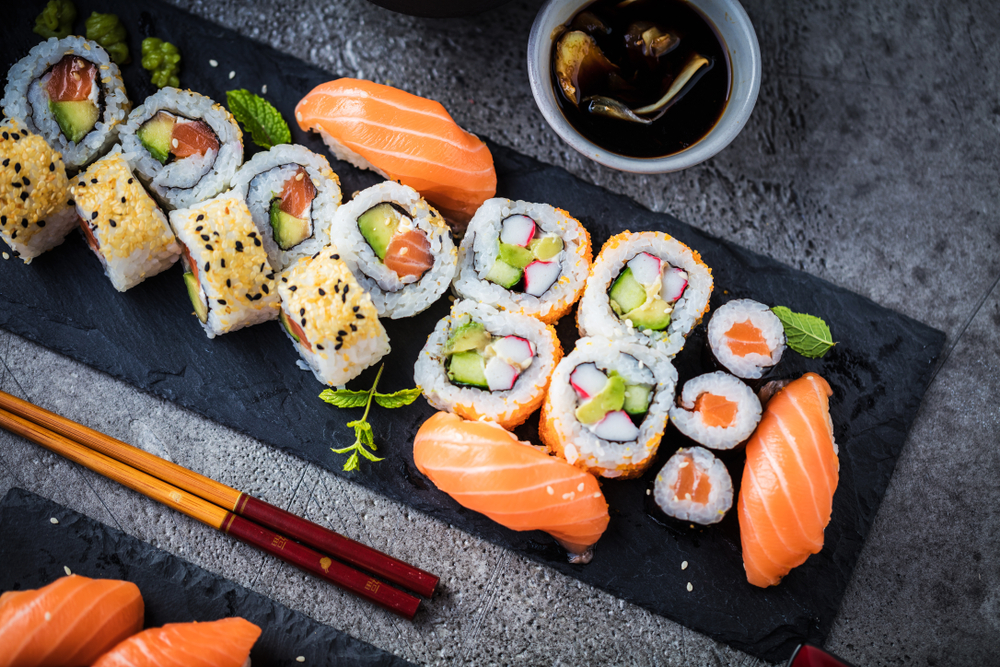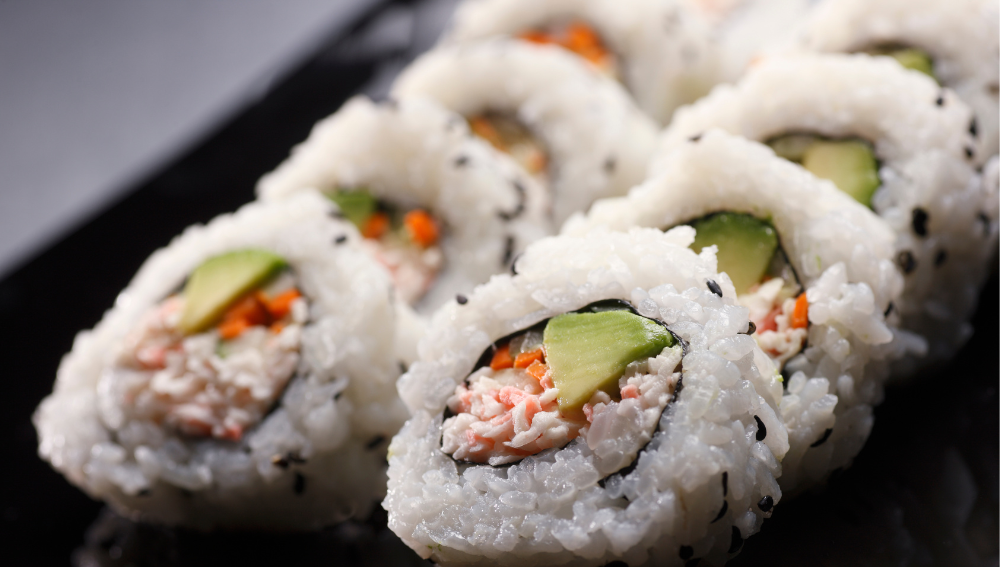As a fan of Korean cuisine, I have always loved the taste of kimbap. This delicious dish is a type of seaweed roll that is packed with flavorful ingredients such as rice, vegetables, and meat.
However, reheating kimbap can be a bit tricky as the texture of the ingredients can easily become compromised. In this article, I will share some tips and tricks for reheating kimbap so that you can enjoy this delicious Korean dish even as leftovers.

Understanding kimbap is important when it comes to reheating it. Kimbap is a popular Korean food that is often compared to sushi due to its similar appearance. However, kimbap is typically made with cooked ingredients and does not contain raw fish like sushi.
This makes it a great option for those who are not fans of raw fish. When it comes to reheating kimbap, it is important to preserve the texture and flavor of the ingredients while ensuring that it is heated through properly.
Preservation of kimbap is key when it comes to reheating it. The texture of the ingredients in kimbap can easily become compromised when reheated improperly. For example, using a microwave can result in soggy rice and limp vegetables.
However, there are several methods that you can use to reheat kimbap while preserving its texture and flavor. In the following sections, I will share some of the best methods for reheating kimbap.
Key Takeaways
- Understanding kimbap is important when reheating it
- Preservation of kimbap is key when reheating it
- The stovetop method is the best way to reheat kimbap
Understanding Kimbap
As a Korean dish, Kimbap is a traditional roll filled with cooked short-grain rice, vegetables, meat, and egg.
The filling can vary depending on the cook’s preference, but commonly includes cucumber, carrot, and bulgogi. The roll is then wrapped in seaweed, also known as nori, and sliced into bite-sized pieces.
The short-grain rice used in kimbap is different from other types of rice because it is stickier and holds its shape better, making it easier to roll.
The rice is seasoned with a mixture of sesame oil, soy sauce, and other seasonings to give it a unique flavor.
The vegetables used in kimbap are typically julienned, meaning they are cut into thin, matchstick-like pieces. This makes them easier to roll and adds a nice crunch to the dish.
The meat used in kimbap can vary, but bulgogi is a popular choice because it is thinly sliced and marinated in a sweet and savory sauce.
Egg is also a common ingredient in kimbap. It is typically cooked into a thin omelet and sliced into strips before being added to the roll. This adds another layer of flavor and texture to the dish.
Overall, kimbap is a delicious and filling dish that can be enjoyed as a snack or a meal. Its traditional ingredients and preparation methods make it a staple in Korean cuisine.
Preservation of Kimbap
As a big fan of Korean cuisine, I always make sure to have some kimbap in my fridge. However, reheating kimbap can be tricky, and it’s important to preserve it properly to avoid spoilage and maintain its flavor.
In this section, I will share some tips on how to preserve kimbap to ensure it stays fresh and delicious.
Firstly, it’s important to store leftover kimbap in an airtight container. This will prevent moisture from seeping in and making the rice soggy.
I prefer to use a plastic container with a tight-fitting lid, but you can also use a zip-lock bag or wrap the kimbap in plastic wrap. Make sure to press out any excess air before sealing the container.
Secondly, it’s important to refrigerate the kimbap if you’re not planning to eat it right away. Kimbap can be stored in the fridge for up to two days.
It’s best to place the container in the main compartment of the fridge, rather than the door, as the temperature is more consistent there.
When it comes to reheating kimbap, it’s best to let it come to room temperature first. This will prevent the rice from becoming hard and chewy. If you’re in a rush, you can microwave the kimbap for 10-15 seconds to take the chill off.
Lastly, if you’re planning to store kimbap for a longer period, it’s best to freeze it. Wrap the kimbap tightly in plastic wrap and place it in an airtight container or zip-lock bag.
Frozen kimbap can be stored for up to a month. When you’re ready to eat it, let it thaw in the fridge overnight and then bring it to room temperature before reheating.
Overall, proper preservation of kimbap is key to maintaining its flavor and texture. By following these tips, you can enjoy delicious kimbap even when it’s leftover or stored for a longer period.
Reheating Kimbap: The Basics
When it comes to reheating kimbap, there are a few things to keep in mind to ensure that it maintains its texture, flavor, and moisture.
Here are some tips on how to reheat kimbap properly:
Is it Okay to Reheat Kimbap?
Yes, it is okay to reheat kimbap. However, it is important to reheat it properly to avoid drying it out or making it too rubbery.
Reheat Method
There are several methods you can use to reheat kimbap, including:
- Stovetop method: This is the best method to reheat kimbap without sacrificing its taste or texture. Heat a frying pan or skillet with some oil, preferably sesame oil, on medium heat. Dip the kimbap in beaten egg and fry it until it becomes crispy on the outside and warmed through on the inside.
- Steaming method: Place the kimbap on a plate inside a steamer or steam basket, and steam it for a few minutes until heated through. This method helps retain moisture and prevents the kimbap from drying out.
- Oven method: Preheat the oven to 350°F. Wrap the kimbap in aluminum foil and place it in the oven for 10-15 minutes until heated through. This method is best for reheating a large batch of kimbap.
Moisture, Texture, and Flavor
To maintain the moisture, texture, and flavor of the kimbap, avoid overheating it or leaving it in the oven or microwave for too long. If you prefer extra crunch, briefly toast the reheated kimbap in a pan with a little oil after using the oven or microwave.
Overall, reheating kimbap is easy and can be done using various methods. By following these tips, you can enjoy delicious leftovers without sacrificing the taste or texture of the kimbap.
Microwave Method for Reheating Kimbap
When it comes to reheating kimbap, using a microwave is a quick and easy option. However, it’s important to note that using a microwave can affect the texture and taste of the kimbap.
Here’s how to reheat kimbap using a microwave:
- Place the kimbap on a microwave-safe plate.
- If the kimbap has dried out, you can place a damp paper towel over it to add moisture. Alternatively, you can sprinkle a few drops of water on the kimbap.
- Cover the kimbap with another microwave-safe plate or a lid to trap in the heat.
- Microwave the kimbap on high for 30 seconds to 1 minute, depending on the wattage of your microwave. Check the kimbap after 30 seconds to see if it’s heated through. If not, continue microwaving in 10-second intervals until it’s heated to your liking.
- Carefully remove the kimbap from the microwave and let it cool for a few seconds before eating.
It’s important to note that using a wet paper towel to cover the kimbap can make it soggy. So, if you want to add moisture, it’s best to sprinkle a few drops of water on the kimbap instead.
Also, keep in mind that microwaves vary in wattage, so adjust the cooking time accordingly. It’s better to start with a shorter time and add more if needed to avoid overcooking the kimbap.
Overall, using a microwave is a convenient way to reheat kimbap, but it’s not the best option if you want to maintain the texture and taste of the kimbap. If you have the time, using a stovetop or oven method may be a better choice.
Stovetop Method for Reheating Kimbap
When it comes to reheating kimbap, the stovetop method is one of the best options. It allows for indirect heat to warm up the kimbap without making it soggy or drying it out.
Here’s how to do it:
- Heat up a pan or frying pan on medium heat.
- Add a little bit of vegetable oil to the pan to prevent the kimbap from sticking.
- Beat an egg or eggs and season with a little salt to taste.
- Dip the kimbap in the beaten egg, making sure to coat it evenly.
- Place the kimbap onto the pan and pan-fry it until the egg is cooked and the kimbap is heated through.
- Flip the kimbap over and pan-fry the other side until it is also heated through and the egg is cooked.
- Remove the kimbap from the pan and let it cool for a minute or two before eating.
The stovetop method is great because it allows for even heating and gives the kimbap a nice crispy texture. Plus, the addition of the beaten egg adds a delicious flavor to the dish.
Overall, the stovetop method is a great way to reheat kimbap. It’s quick, easy, and results in a tasty and satisfying meal.
Oven Method for Reheating Kimbap

When it comes to reheating kimbap, using an oven is a great option if you want to preserve its crunchiness.
Here’s how I do it:
- Preheat your oven to around 350°F (175°C) and allow it to preheat while you prepare the kimbap.
- Wrap the kimbap in aluminum foil or foil paper. This will help to prevent it from drying out while it reheats.
- Place the wrapped kimbap in an oven-safe dish or bowl.
- Put the dish in the oven and let it reheat for about 10-15 minutes. The exact time will depend on the size and thickness of the kimbap.
- Check the kimbap after 10 minutes to see if it’s heated through. If not, continue reheating for another 5 minutes, checking every few minutes until it’s heated to your liking.
It’s important to note that reheating kimbap in the oven can dry it out, so make sure to keep an eye on it and remove it from the oven as soon as it’s heated through.
If you’re reheating a large amount of kimbap, you may want to consider using a toaster oven instead of a full-sized oven.
Overall, the oven method is a great way to reheat kimbap while preserving its crunchiness. Just make sure to wrap it in foil or foil paper and keep an eye on it while it reheats.
Frequently Asked Questions

Can kimbap be reheated?
Yes, kimbap can be reheated. In fact, reheating kimbap is a great way to enjoy leftover kimbap without sacrificing its taste and texture.
What is the best way to reheat kimbap?
The best way to reheat kimbap is on the stove. Heating it on the stove helps to maintain the texture of the ingredients. You can also reheat kimbap in the oven or microwave, but these methods may cause the kimbap to become soggy.
How long should I reheat kimbap for?
The length of time you should reheat kimbap for depends on the method you choose. If you’re reheating kimbap on the stove, it should take about 3-5 minutes.
If you’re reheating kimbap in the oven, it should take about 10-15 minutes. If you’re reheating kimbap in the microwave, it should take about 30-60 seconds.
Can you microwave kimbap?
Yes, you can microwave kimbap. However, microwaving kimbap may cause the rice to become dry and the ingredients to become soggy. If you choose to microwave kimbap, be sure to cover it with a damp paper towel to help prevent it from drying out.
What is the recommended temperature for reheating kimbap?
There is no specific recommended temperature for reheating kimbap. However, it’s important to reheat kimbap at a low to medium heat to prevent it from burning or becoming too dry.
How do you prevent kimbap from becoming soggy when reheating?
To prevent kimbap from becoming soggy when reheating, it’s important to reheat it at a low to medium heat. You can also wrap the kimbap in aluminum foil before reheating it to help prevent it from drying out.
Additionally, you can add a small amount of water to the pan when reheating kimbap on the stove to help create steam and keep the kimbap moist.







